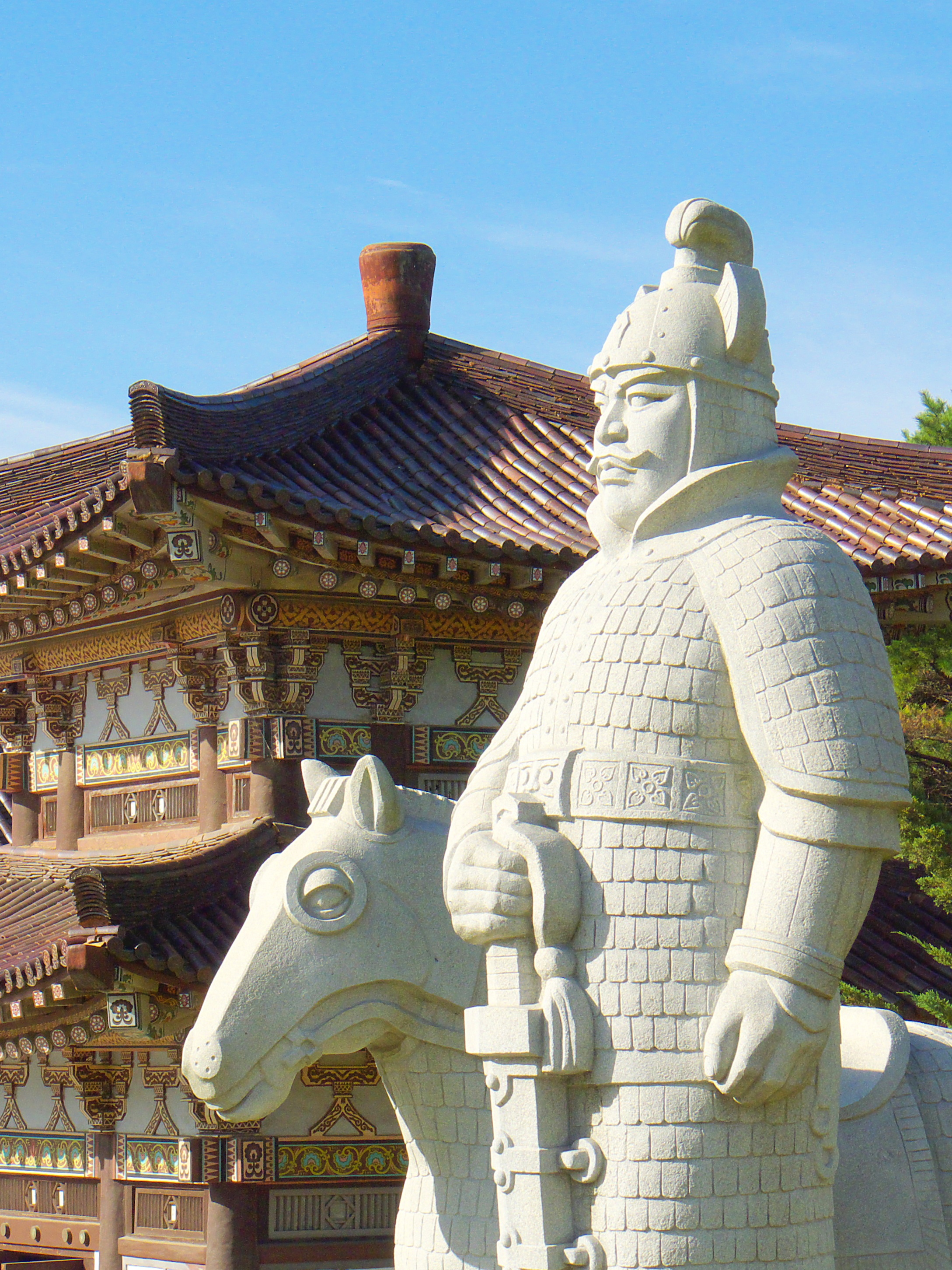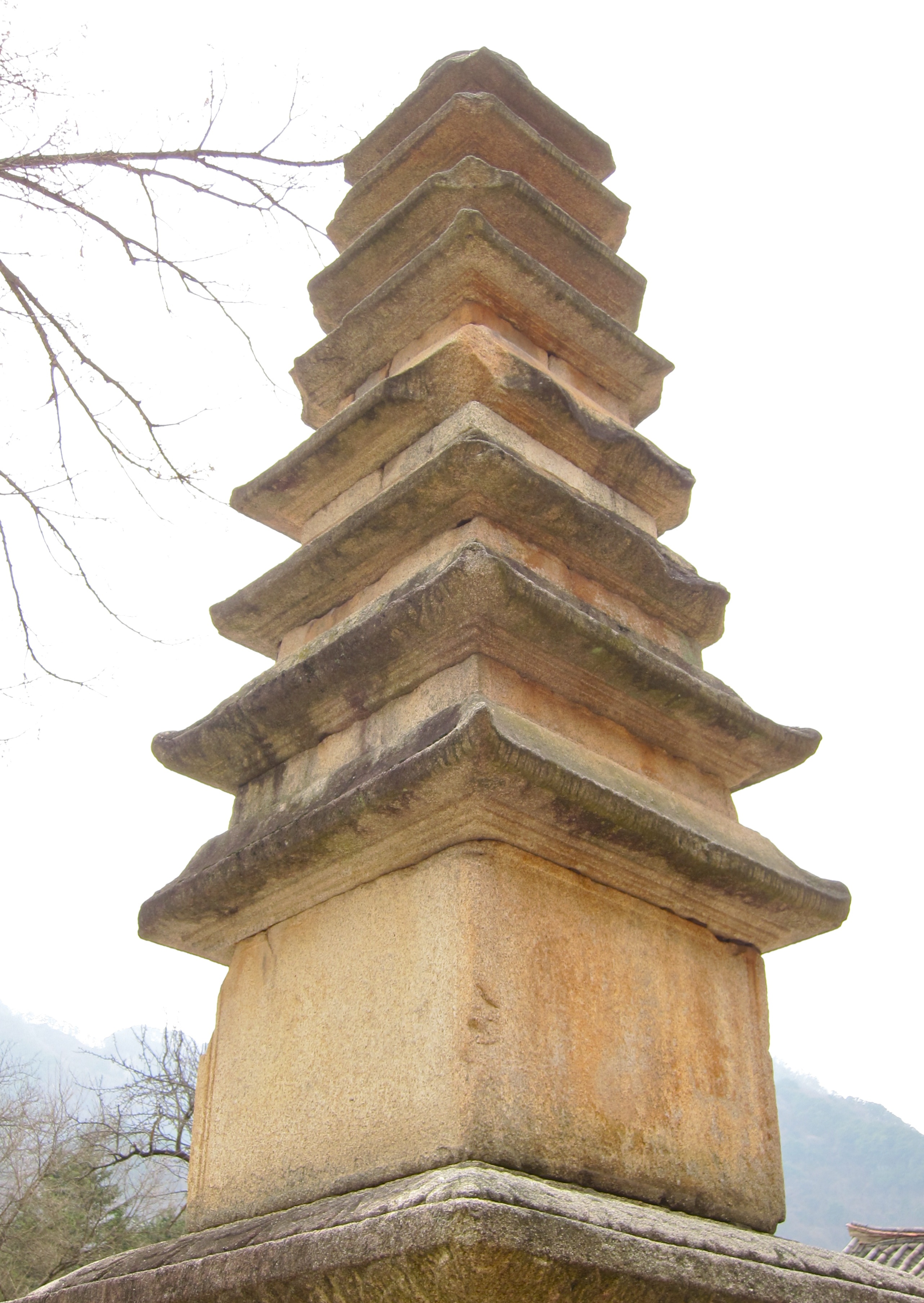|
Chongbang Fortress
Jŏngbang Castle ( ko, 정방산성) is a Koguryo-era mountain fortress located outside Sariwŏn, North Hwanghae Province, North Korea. Cresting the ridges of Mt. Jŏngbang, the castle was founded as a fortress for the defence of the Koguryo capital of Pyongyang. Rebuilt in 1632, the castle is encircled by over 12 kilometres of 6-metre high stone walls, which extend to over ten metres tall in some places. The walls are pierced by four large gates, the most well preserved of which is the south one. Inside the castle, there are the ruins of commander's posts, barracks, arsenals, armories, granaries, storehouses. KCNA. 25 February 1998. Archived from th on 8 Septembe ... [...More Info...] [...Related Items...] OR: [Wikipedia] [Google] [Baidu] |
Koguryo
Goguryeo (37 BC–668 AD) ( ) also called Goryeo (), was a Korean kingdom located in the northern and central parts of the Korean Peninsula and the southern and central parts of Northeast China. At its peak of power, Goguryeo controlled most of the Korean peninsula, large parts of Manchuria and parts of eastern Mongolia and Inner Mongolia. Along with Baekje and Silla, Goguryeo was one of the Three Kingdoms of Korea. It was an active participant in the power struggle for control of the Korean peninsula and was also associated with the foreign affairs of neighboring polities in China and Yamato period, Japan. The ''Samguk sagi'', a 12th-century text from Goryeo, indicates that Goguryeo was founded in 37 BC by Jumong (), a prince from Buyeo, who was enthroned as Dongmyeong of Goguryeo, Dongmyeong. Goguryeo was one of the great powers in East Asia, until its defeat by a Silla–Tang alliance in 668 after prolonged exhaustion and internal strife caused by the death of Yeon Gaeso ... [...More Info...] [...Related Items...] OR: [Wikipedia] [Google] [Baidu] |
Sariwŏn
Sariwŏn () is the capital of North Hwanghae Province, North Korea. Population The city's population as of 2008 is 307,764. Administrative divisions Sariwŏn is divided into 31 '' tong'' (neighbourhoods) and 9 '' ri'' (villages): Healthcare Sariwŏn has the only pediatric hospital (founded by Hungarians in the 1950s) in the entire region; it serves 16 districts and 500,000 children and teens annually. Industry Sariwŏn has a Potassic/Potash Fertilizer Complex and a tractor factory. Education Educational institutions include the University of Agriculture, University of Geology, University of Medicine, University of Education nos. 1 & 2 and the Sariwŏn Pharmaceutical College of Koryŏ. Tourism The "Sariwŏn Folklore street" was constructed during Kim-Jong-il's rule. Built to display an ideal picture of ancient Korea, it includes buildings in the "historical style" and a collection of ancient Korean cannons. Although it is considered an inaccurate romanticized recreation o ... [...More Info...] [...Related Items...] OR: [Wikipedia] [Google] [Baidu] |
North Hwanghae Province
North Hwanghae Province (Hwanghaebuk-to; , lit. "north Yellow Sea province") is a province of North Korea North Korea, officially the Democratic People's Republic of Korea (DPRK), is a country in East Asia. It constitutes the northern half of the Korean Peninsula and shares borders with China and Russia to the north, at the Yalu (Amnok) and .... The province was formed in 1954 when the former Hwanghae Province was split into North and South Hwanghae. The provincial capital is Sariwon. The province is bordered by Pyongyang and South Pyongan to the north, Kangwon-do (North Korea), Kangwon to the east, Kaesong Industrial Region and South Korea's Gyeonggi Province to the south, and South Hwanghae southwest. In 2003, Kaesong, Kaesong Directly Governed City (''Kaesong Chikhalsi'') became part of North Hwanghae. Later on in 2019, it was promoted as Special City (''Kaesong T'ŭkpyŏlsi''). Thus, it was separated from North Hwanghae. Administrative divisions North Hwanghae ... [...More Info...] [...Related Items...] OR: [Wikipedia] [Google] [Baidu] |
North Korea
North Korea, officially the Democratic People's Republic of Korea (DPRK), is a country in East Asia. It constitutes the northern half of the Korean Peninsula and shares borders with China and Russia to the north, at the Yalu (Amnok) and Tumen rivers, and South Korea to the south at the Korean Demilitarized Zone. North Korea's border with South Korea is a disputed border as both countries claim the entirety of the Korean Peninsula. The country's western border is formed by the Yellow Sea, while its eastern border is defined by the Sea of Japan. North Korea, like its southern counterpart, claims to be the legitimate government of the entire peninsula and adjacent islands. Pyongyang is the capital and largest city. In 1910, Korea was annexed by the Empire of Japan. In 1945, after the Japanese surrender at the end of World War II, Korea was divided into two zones along the 38th parallel, with the north occupied by the Soviet Union and the south occupied by the U ... [...More Info...] [...Related Items...] OR: [Wikipedia] [Google] [Baidu] |
Pyongyang
Pyongyang (, , ) is the capital and largest city of North Korea, where it is known as the "Capital of the Revolution". Pyongyang is located on the Taedong River about upstream from its mouth on the Yellow Sea. According to the 2008 population census, it has a population of 3,255,288. Pyongyang is a directly administered city () with equal status to North Korean provinces. Pyongyang is one of the oldest cities in Korea. It was the capital of two ancient Korean kingdoms, Gojoseon and Goguryeo, and served as the secondary capital of Goryeo. Much of the city was destroyed during the First Sino-Japanese War, but it was revived under Japanese rule and became an industrial center. Following the establishment of North Korea in 1948, Pyongyang became its ''de facto'' capital. The city was again devastated during the Korean War, but was quickly rebuilt after the war with Soviet assistance. Pyongyang is the political, industrial and transport center of North Korea. It is home to ... [...More Info...] [...Related Items...] OR: [Wikipedia] [Google] [Baidu] |
Songbulsa
Sŏngbul-sa ( ko, 성불사)is a Korean Buddhist temple in Sariwŏn, North Hwanghae Province, North Korea. It is located within the castle on Mt. Jŏngbang and was founded in 898 AD. The temple consists of six buildings, some of which are among the oldest wooden buildings in North Korea."Songbul Temple in DPRK" KCNA. 3 August 2005. Archived from th on 28 October 2005. * Kukrak Hall (극락전/). Rebuilt in 1374, this pavilion sits on a raised stone platform and features delicate paintings, cow-tongue eaves, and doors with carved flower grilles. A Koryo period five-story stone pagoda stands in front of it. * Ungjin Hall (웅진전/). Rebuilt i ... [...More Info...] [...Related Items...] OR: [Wikipedia] [Google] [Baidu] |
Taehung Castle
Taehung Castle is a mountain fortress of the early Goryeo period, located outside Kaesŏng, North Hwanghae Province, North Korea. Originally encompassing both Mts. Chonmasan, Chŏnma and Songgosan, Songgo, the castle was first founded as a fortress for the defense of the capital, encircled by over 10 kilometers of stone walls. Today, many of the walls have become overgrown ruins. The fortress contains two small Buddhist temples, Kwanumsa (Chonmasan), Kwanumsa and Taehungsa. North Gate The only one of the fortress' original six gates to survive to the present day, this gate is located just behind Pakyon Falls and is topped with a Joseon Dynasty, Joseon-dynasty pavilion. Kwanŭm Temple Named after Guanyin, the buddhist bodhisattva of compassion, this small temple is located in the beautiful valley between Mts. Songgo and Chŏnma. The temple was founded in 970 when a monk deposited two marble statues of the goddess in a cave behind the temple's current location. The temple itself w ... [...More Info...] [...Related Items...] OR: [Wikipedia] [Google] [Baidu] |
National Treasures Of North Korea
A National Treasure (국보; 國寶 : ) is a tangible artifact, site, or building deemed by the Government of North Korea to have significant historical or artistic value to the country. History The first list of Korean cultural treasures was designated by Governor-General of Korea in 1938 during the Japanese occupation with "The Act of Treasures of the Joseon dynasty". Nos. 1-50 Nos. 51-100 Nos. 101-150 Nos. 151-193 See also * Cultural assets of North Korea * Natural monuments of North Korea * National Treasure (South Korea) * Complex of Koguryo Tombs * History of Korea The Lower Paleolithic era in the Korean Peninsula and Manchuria began roughly half a million years ago. Christopher J. Norton, "The Current State of Korean Paleoanthropology", (2000), ''Journal of Human Evolution'', 38: 803–825. The earlies ... * Culture of Korea * List of World Heritage Sites in Asia#North Korea (1) Footnotes {{reflist References * http://www.kcpia.or.kr/kcpia_mail/mail ... [...More Info...] [...Related Items...] OR: [Wikipedia] [Google] [Baidu] |
1632 Establishments In Asia
Year 163 ( CLXIII) was a common year starting on Friday (link will display the full calendar) of the Julian calendar. At the time, it was known as the Year of the Consulship of Laelianus and Pastor (or, less frequently, year 916 ''Ab urbe condita''). The denomination 163 for this year has been used since the early medieval period, when the Anno Domini calendar era became the prevalent method in Europe for naming years. Events By place Roman Empire * Marcus Statius Priscus re-conquers Armenia; the capital city of Artaxata is ruined. Births * Cui Yan (or Jigui), Chinese official and politician (d. 216) * Sun Shao (or Changxu), Chinese chancellor (d. 225) * Tiberius Claudius Severus Proculus, Roman politician * Xun Yu, Chinese politician and adviser (d. 212) Deaths * Kong Zhou, father of Kong Rong (b. 103) * Marcus Annius Libo Marcus Annius Libo was a Roman Senator active in the early second century AD. Life Libo came from the upper ranks of the Roman aristocracy. ... [...More Info...] [...Related Items...] OR: [Wikipedia] [Google] [Baidu] |
17th-century Establishments In Korea
The 17th century lasted from January 1, 1601 ( MDCI), to December 31, 1700 ( MDCC). It falls into the early modern period of Europe and in that continent (whose impact on the world was increasing) was characterized by the Baroque cultural movement, the latter part of the Spanish Golden Age, the Dutch Golden Age, the French ''Grand Siècle'' dominated by Louis XIV, the Scientific Revolution, the world's first public company and megacorporation known as the Dutch East India Company, and according to some historians, the General Crisis. From the mid-17th century, European politics were increasingly dominated by the Kingdom of France of Louis XIV, where royal power was solidified domestically in the civil war of the Fronde. The semi-feudal territorial French nobility was weakened and subjugated to the power of an absolute monarchy through the reinvention of the Palace of Versailles from a hunting lodge to a gilded prison, in which a greatly expanded royal court could be more easily ... [...More Info...] [...Related Items...] OR: [Wikipedia] [Google] [Baidu] |
Archaeological Sites In North Korea
Archaeology or archeology is the scientific study of human activity through the recovery and analysis of material culture. The archaeological record consists of artifacts, architecture, biofacts or ecofacts, sites, and cultural landscapes. Archaeology can be considered both a social science and a branch of the humanities. It is usually considered an independent academic discipline, but may also be classified as part of anthropology (in North America – the four-field approach), history or geography. Archaeologists study human prehistory and history, from the development of the first stone tools at Lomekwi in East Africa 3.3 million years ago up until recent decades. Archaeology is distinct from palaeontology, which is the study of fossil remains. Archaeology is particularly important for learning about prehistoric societies, for which, by definition, there are no written records. Prehistory includes over 99% of the human past, from the Paleolithic until ... [...More Info...] [...Related Items...] OR: [Wikipedia] [Google] [Baidu] |






.jpg)